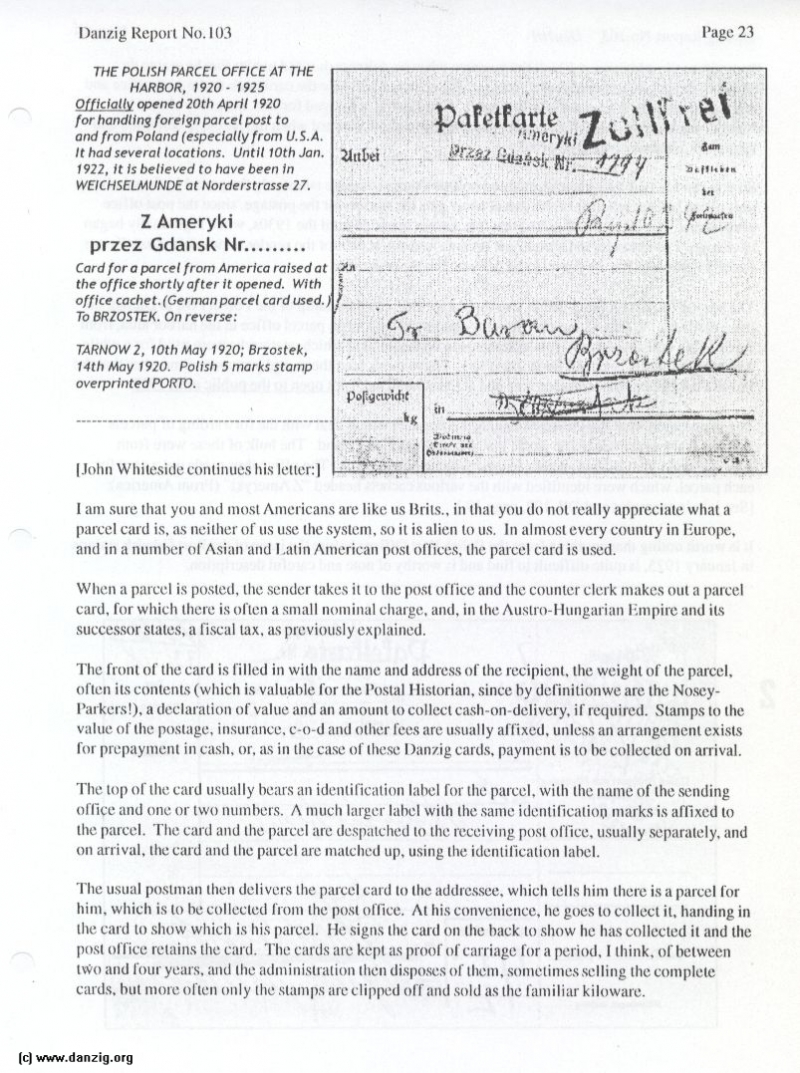
[John Whilcside continues his letter: ]
I am sure that you and most Americans are like us Ikits.. in that you do not really appreciate what a parcel card is. as neillier of us use 11w system, so it is alien to us. In almost every country in luropc. and in a number of Asian and I .alin American post olikes, the parcel card is used.
When a parcel is posted. the sender takes it to the post oflice and the counter clerk makes out a parcel card. for which there is often a small nominal charge, and, in the Austro-Ilimgariaii lmpire and its successor states, a fiscal tax. u.s prevously cxplaiiicd.
The front of the card is filled in with the name and address of the recipient, the weight of the pared. often its contents (which is valuable for the Postal I listorian. since by definitionwe are the NoseyP arkers’), a declaration of value aiid an amount to collect cash-on-delivery, if required. Stamps to the value of the postage, insurance, c-o-d and other lees are usually aitixed. unless an arrangenient exist.s for prepayment iii cash, or. as in the case of these I )an-,ig cards, payment is to be collected on arrival.
The top of the card usually hears an identification label for the parcel, with the name of the sending office and one or two numbers. A much larger label with the saitie identilicalioti marks is affixed to the parcel. The card and 11w parcel are despatched to the receiving post ollice, usually separately, and oii arrival, the card and the parcel are .iiatched up. using the identification label.
The usual postman then delivers the parcel card to the addressee, which tells him there is a parcel for him, which is to he collected fioiii the post office. At his convenience, he goes to collect it, handing in the card to show which is his parcel. I I’ signs the card on the hack to show he has collected it and the post ollice retains the card. l’he cards are kept as proof of carriage for a period, I think, of between t() and four years, and the adiiiinisration then disposes of them, sometimes selling the complete cards. hut more often only the stamps art’ clipped oil and sold as the familiar kilowarc.
Danzig Report Vol. 1 - Nr. 103 - April - May - June - 1999, Page 26.
Hits: 3395
Added: 24/07/2015
Copyright: 2025 Danzig.org

